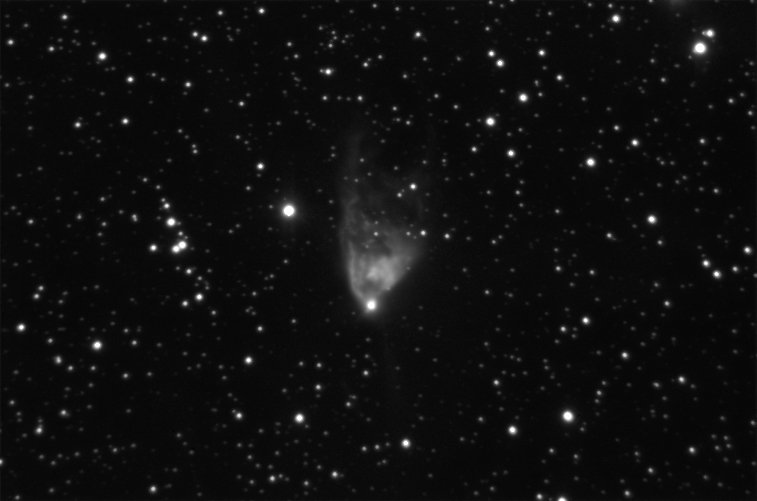

| V1 - V2 - V3 - V4 |

|
||

|
| Names | NGC 2261, Hubble's Variable Nebula |
| Right Ascension (2000.0) | 06:39:09.5 |
| Declination | +08:44:40 |
| Constellation | Monoceros |
| Redshift (z) | ... |
| Heliocentric Radial Velocity | ... |
| Distance (esteem) | 2,500 light years |
| Date (DD/MM/YYYY) | 18/01/2010 |
| Exposure time | 6,000 seconds (20 x 300 exposures) with binning mode 2 x 2 |
| CCD Camera | SBIG ST-8XE |
| Telescope | Meade Instruments Schmidt-Cassegrain 14" LX200 GPS |
| Focal length | 3556 mm |
| Diameter | 355.6 mm |
| Focal ratio | 10 |
| Field of View | 13.3 x 8.9 arcminute |
| Original scale | 1.044 arcsecond / pixel |
| Palomar Observatory Sky Survey images |
| POSS I/E DSS1 Red |
| POSS I/O DSS2 Blue |
| POSS II/F DSS2 Red |
| POSS II/J DSS2 Blue |
| POSS II Color |
| Sloan Digital Sky Survey images |
| SDSS image |
| 0.9-meter telescope Kitt Peak National Observatory image (1968) |
| KPNO |
| Comments |
|
Here you can see the famous Hale Telescope's first light picture taken by Edwin Hubble on January 26, 1949. It was a 15 minute exposure under poor
seeing conditions that account for the large size of the stars. |
|
While studying my picture, on January 22 2010, I noticed that the star USNO-A2.0 0975-03605809 has changed its position in respect of POSS I plates. I collected images from various sources back to the twenties (Mount Wilson 100-inch) to the more recent SDSS and can confirm the proper motion of this star. It's easily recognizable confronting
POSS I and POSS II images. The coordinates in the original USNO-A2 catalogue (epoch 1953.940) are: R.A. 06:39:05.689 Dec +08°45'40.77" (J2000). Measuring the actual coordinates from my image I obtained: R.A. 06:39:05.740 Dec +08°45'29.40" (J2000). The movement seems to be approximately from North to South and is about 11.37" in 57 years. This yields a proper motion of approximately 0.2" per year. The name is NLTT 16798 and is listed as High Proper Motion Star. |